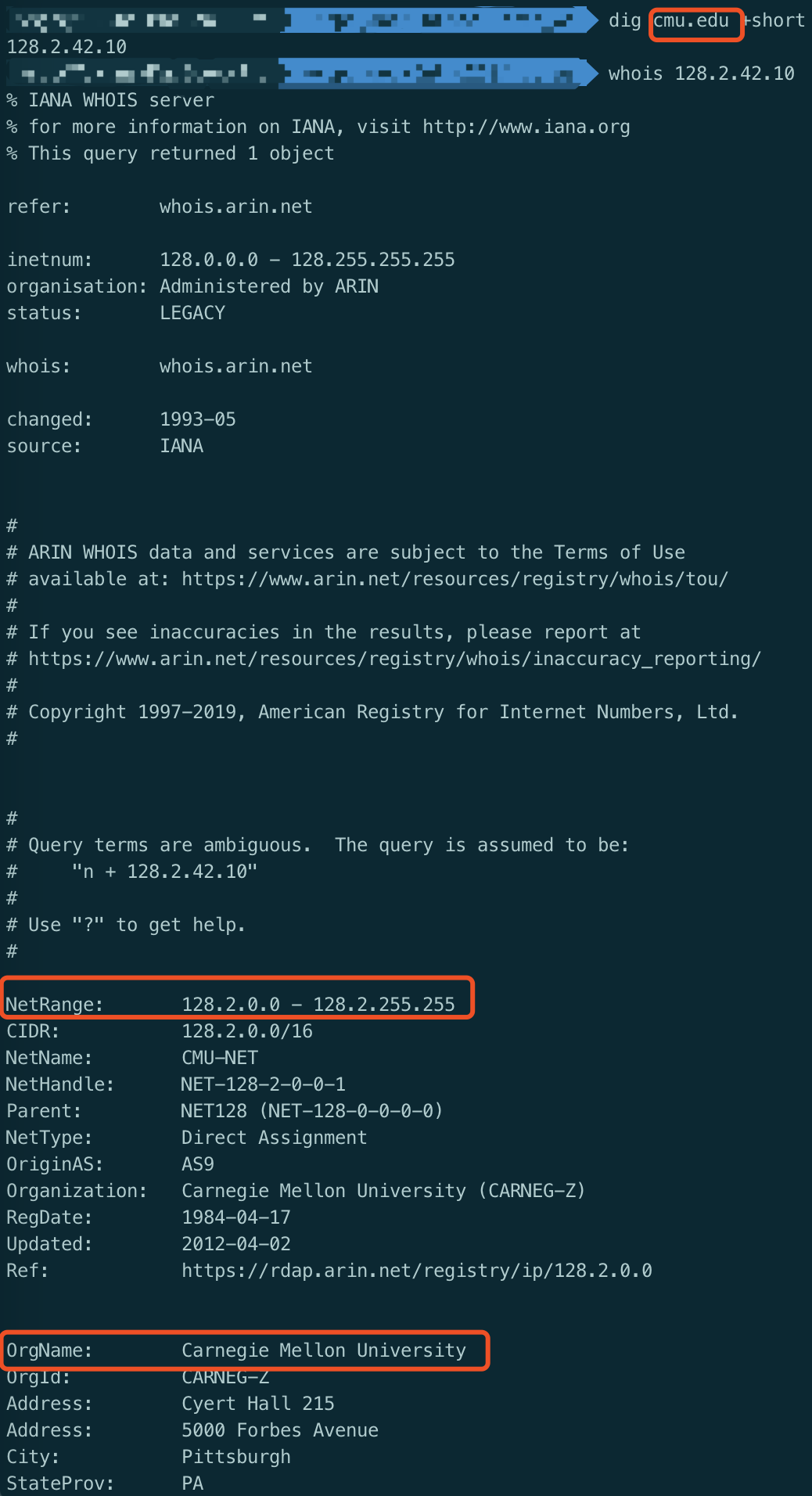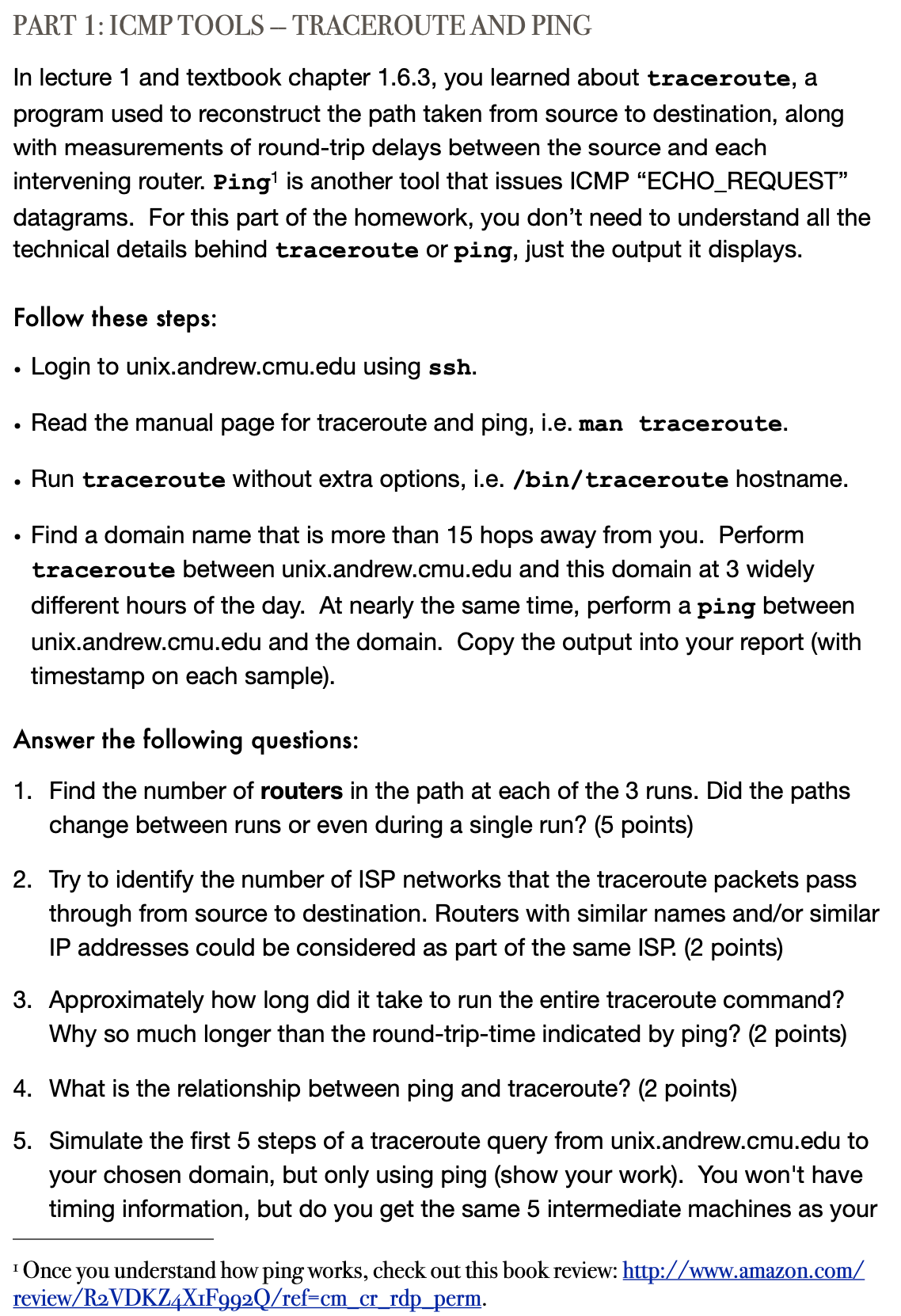


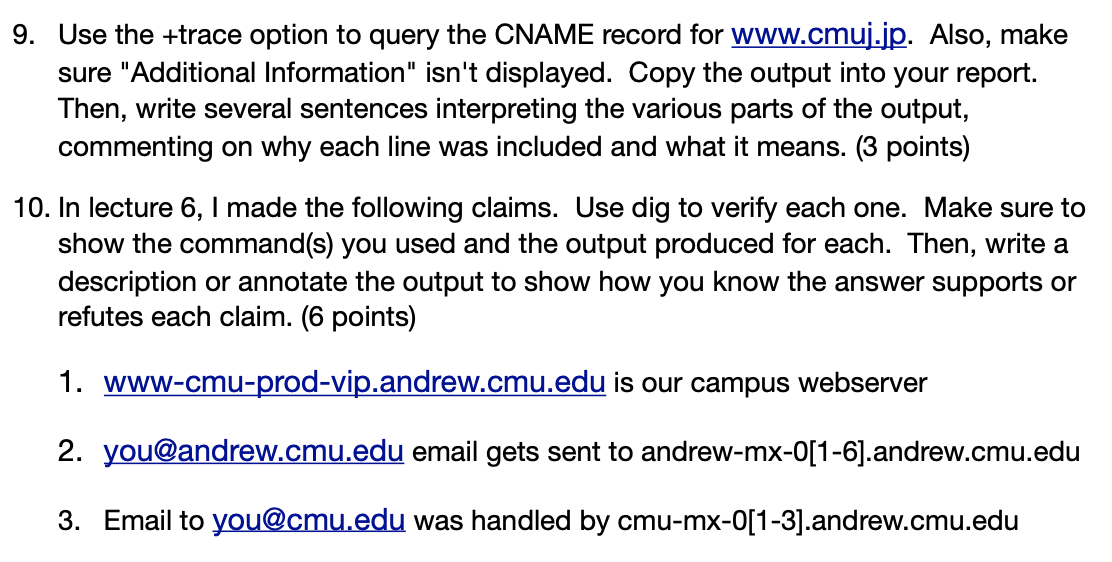
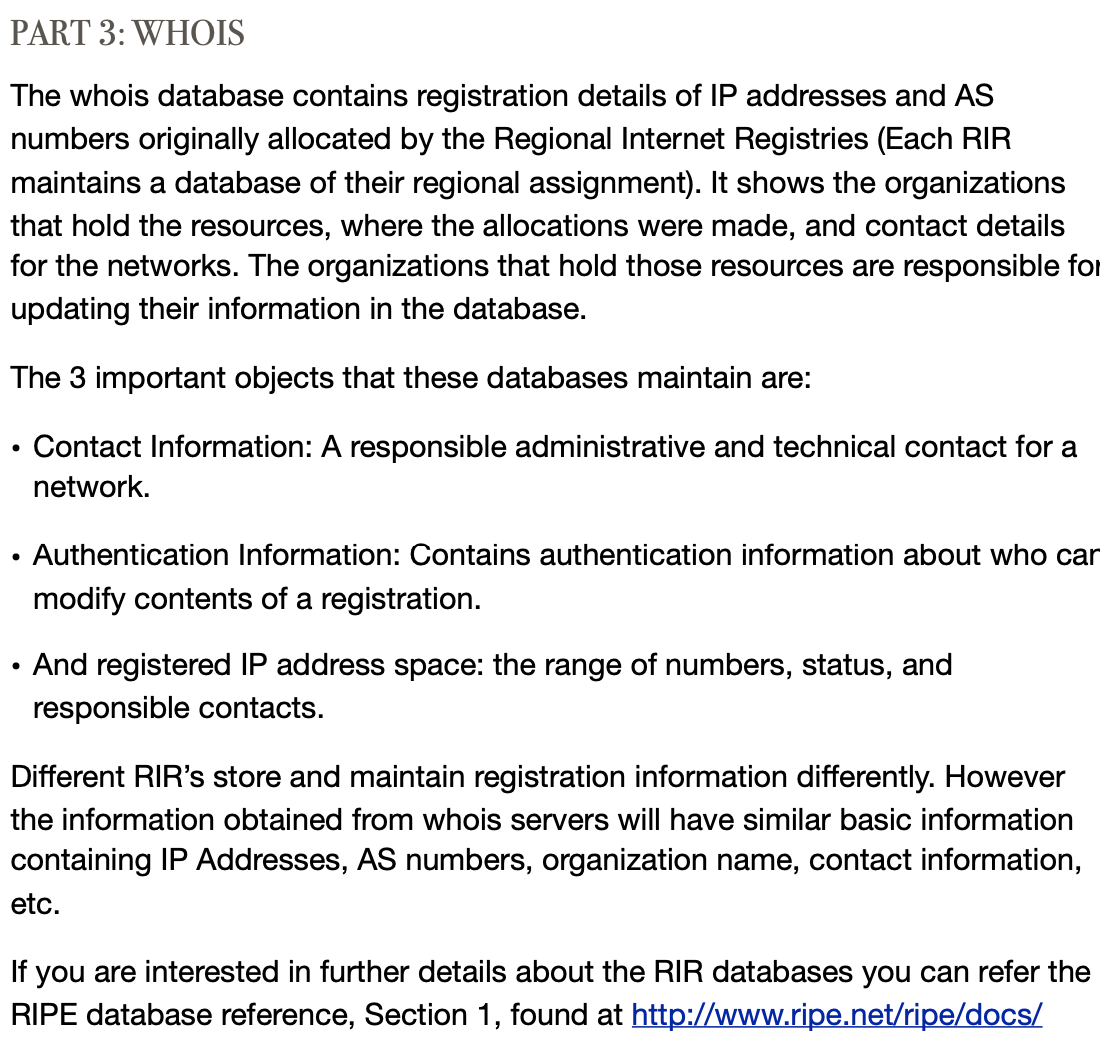
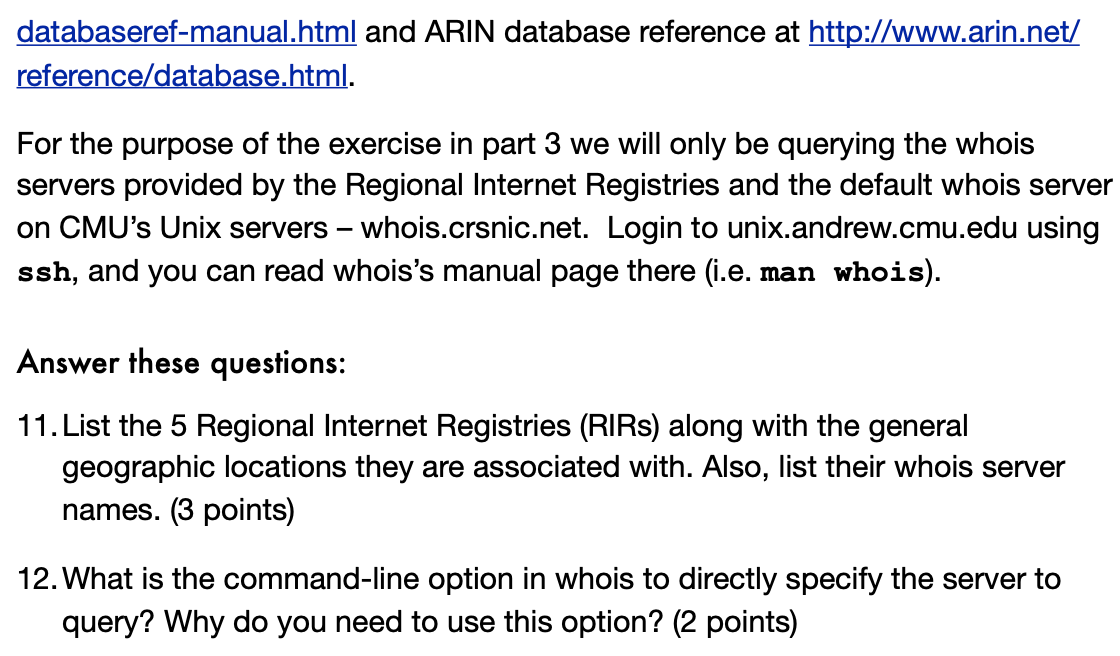
https://blog.csdn.net/reyleon/article/details/12976889
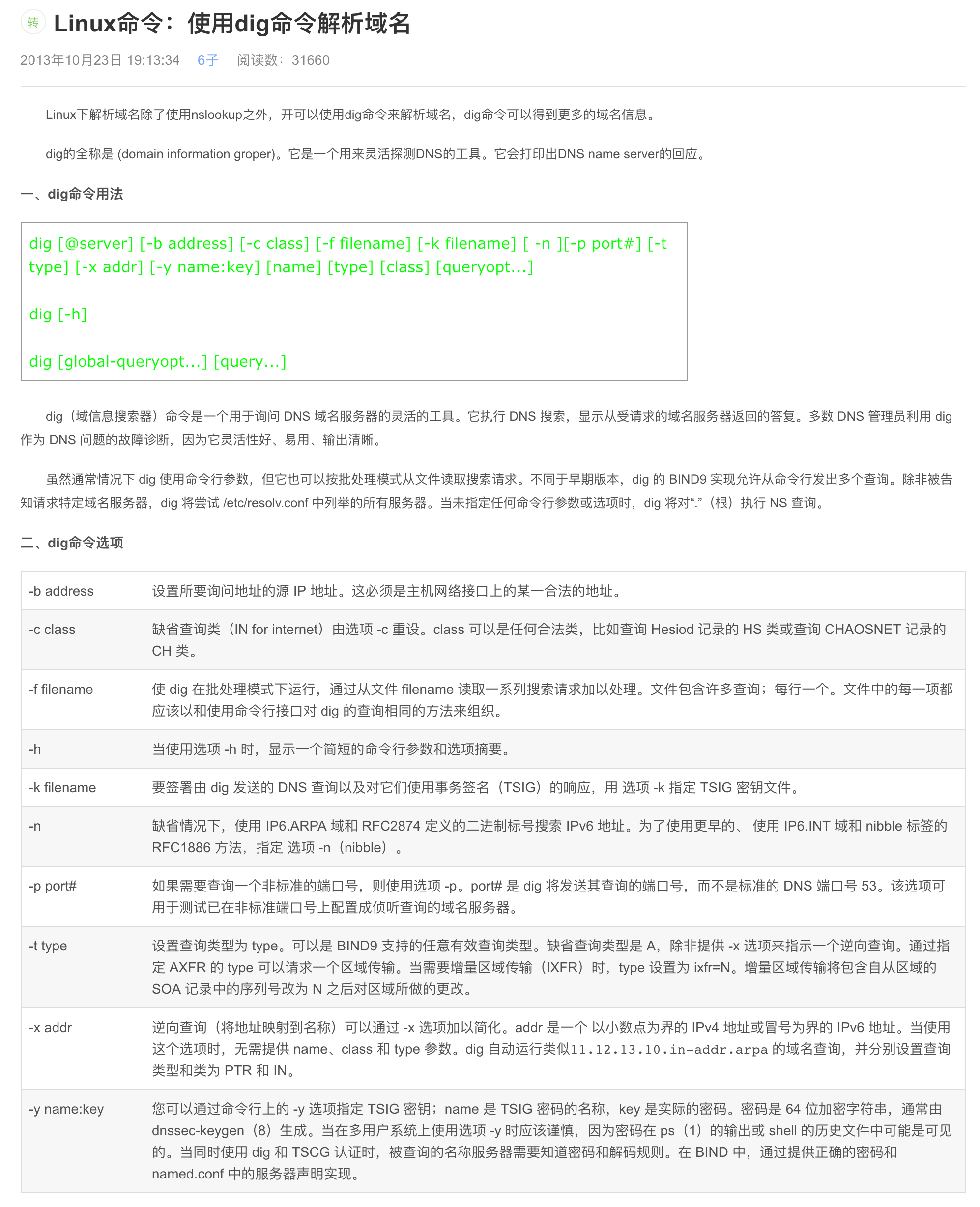
https://www.sysgeek.cn/linux-dig/
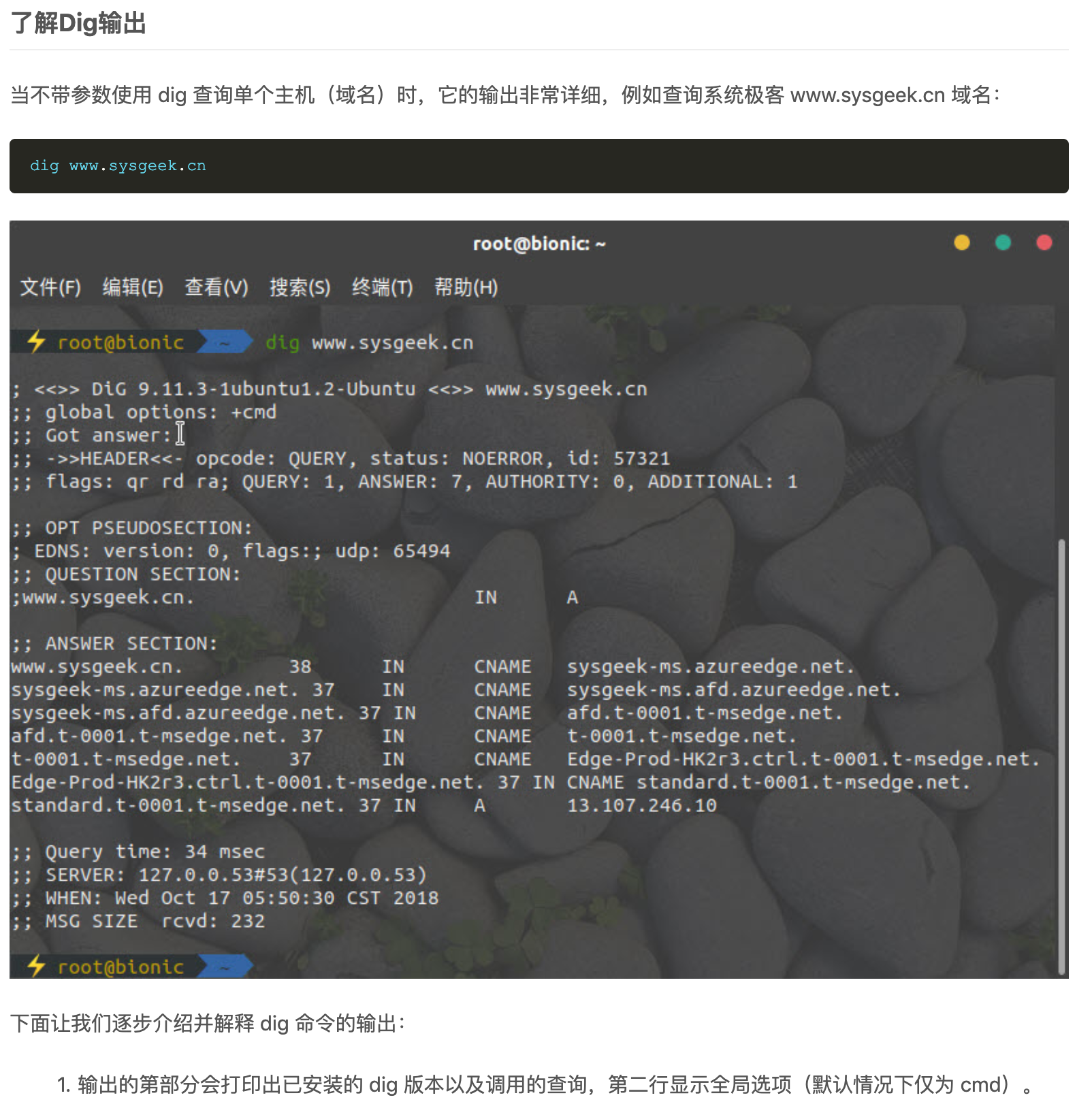
https://www.thegeekstuff.com/2012/02/dig-command-examples/
10 Linux DIG Command Examples for DNS Lookup
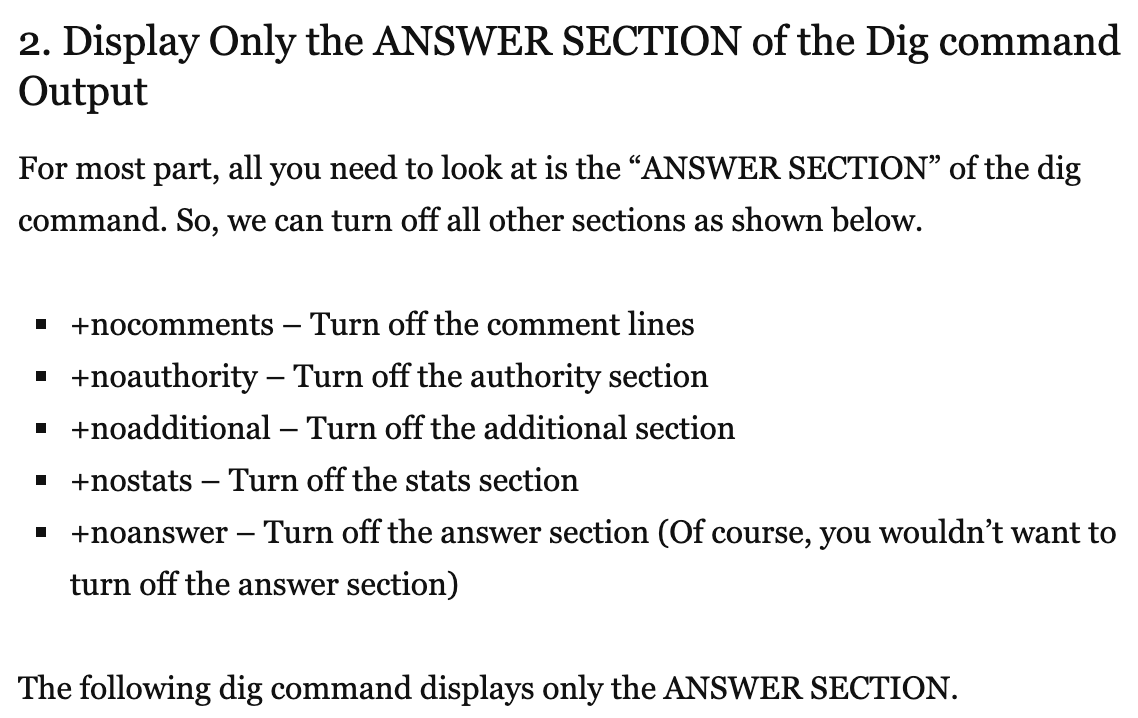
$ dig redhat.com +nocomments +noquestion +noauthority +noadditional +nostats ; <<>> DiG 9.7.3-RedHat-9.7.3-2.el6 <<>> redhat.com +nocomments +noquestion +noauthority +noadditional +nostats ;; global options: +cmd redhat.com. 9 IN A 209.132.183.81
https://www.linux.com/learn/check-your-dns-records-dig

http://www-inst.eecs.berkeley.edu/~ee122/fa13/homework/hw3/HW3-solutions.pdf
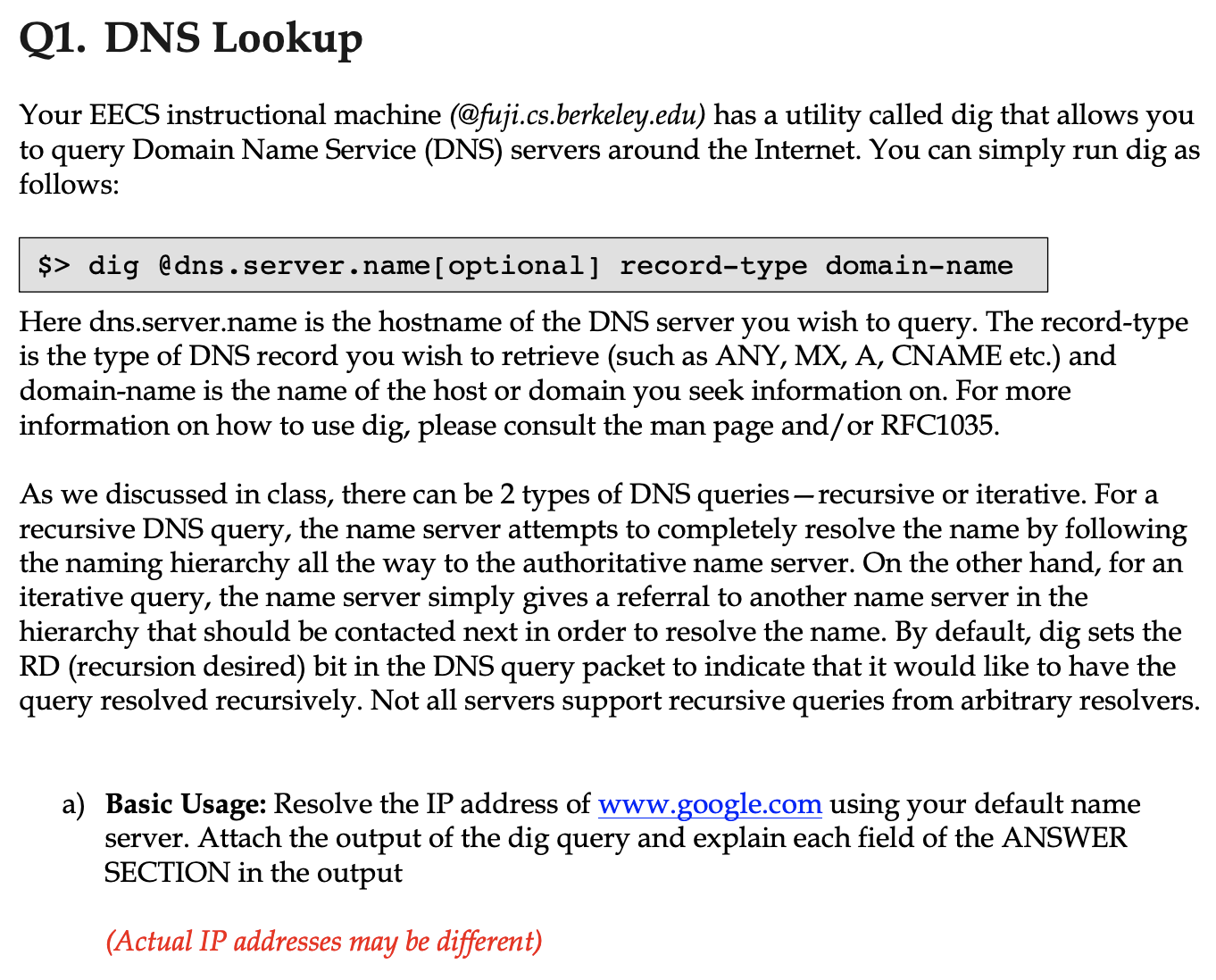
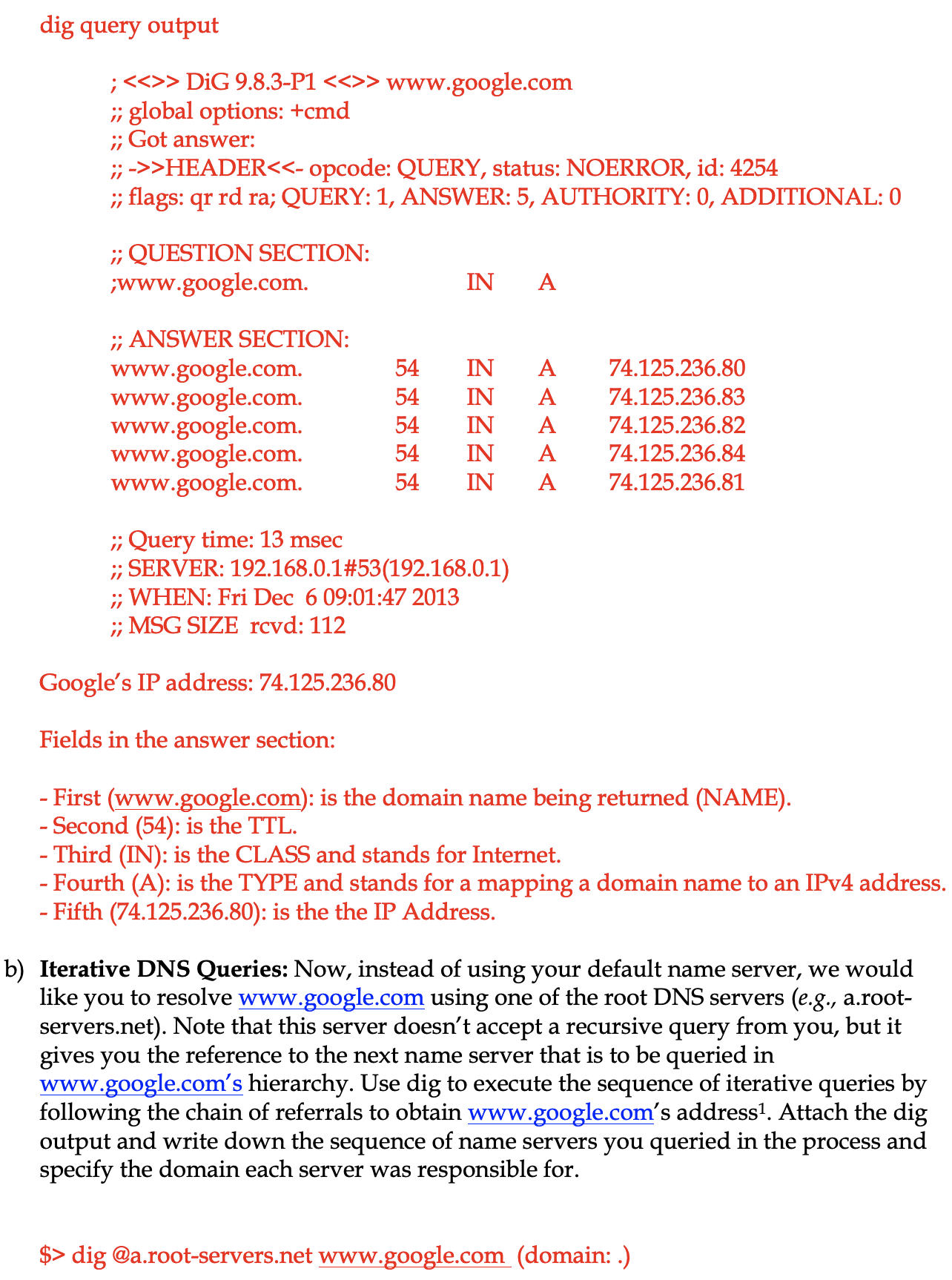
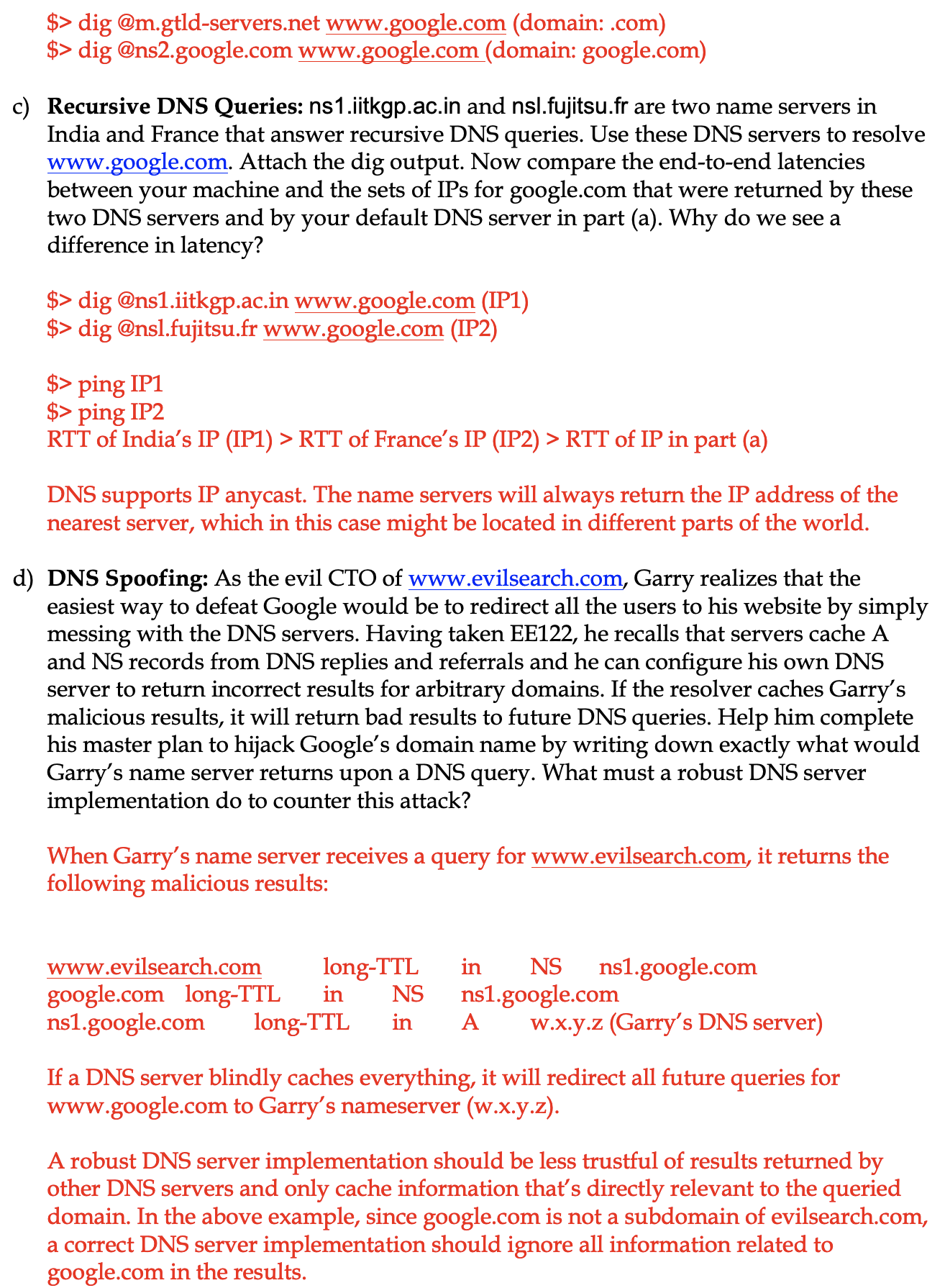

https://zhuanlan.zhihu.com/p/65970240
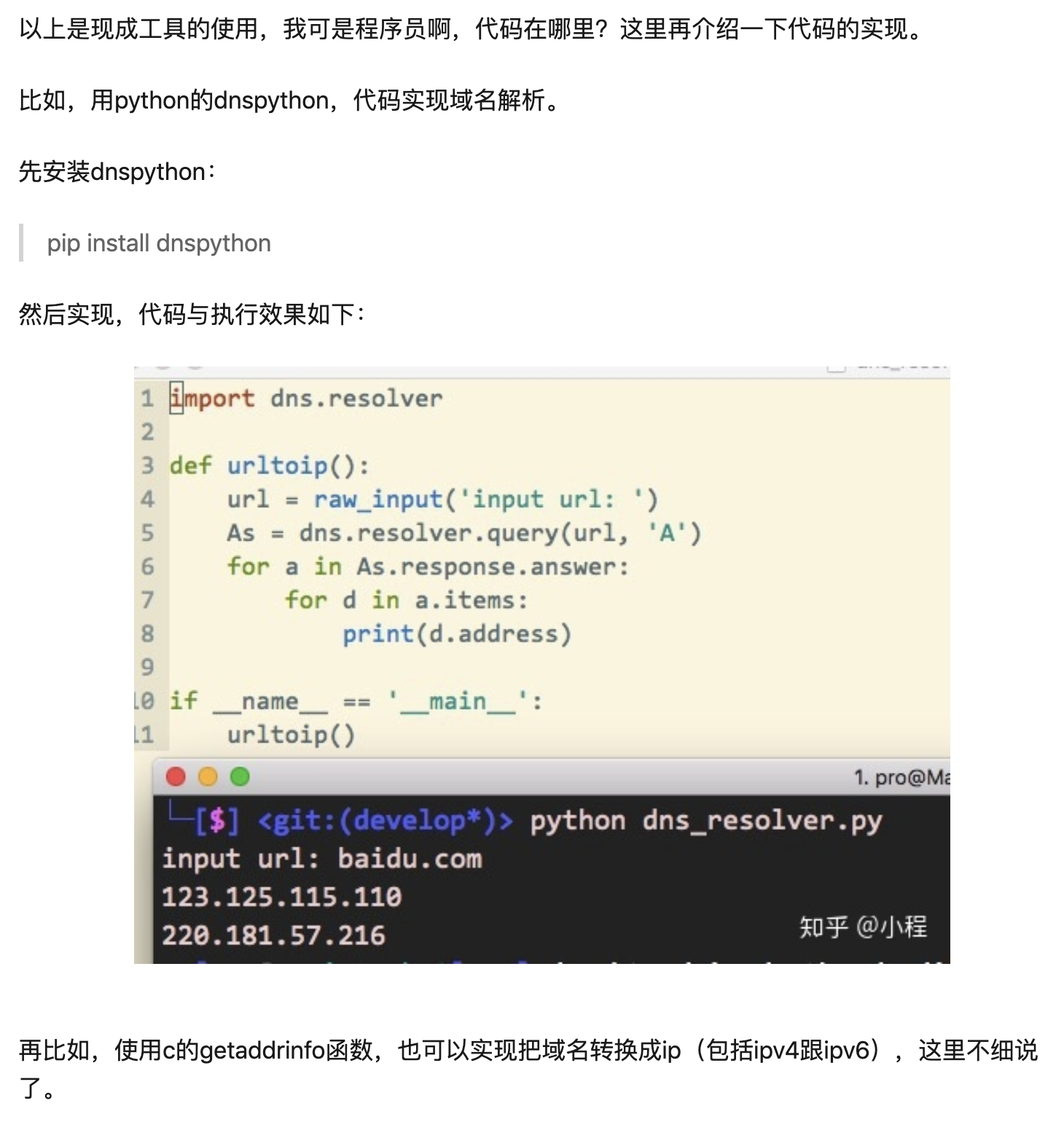
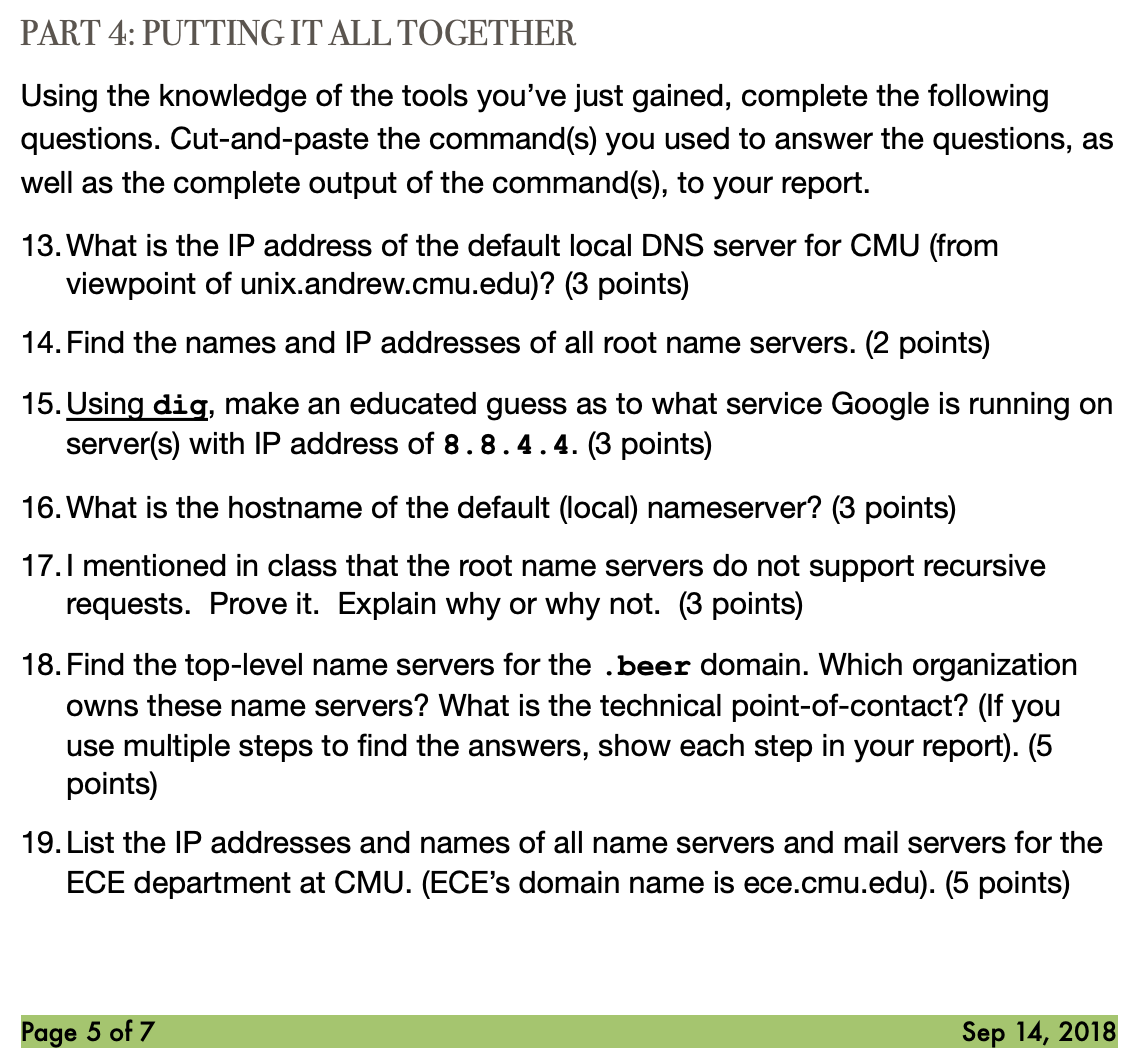
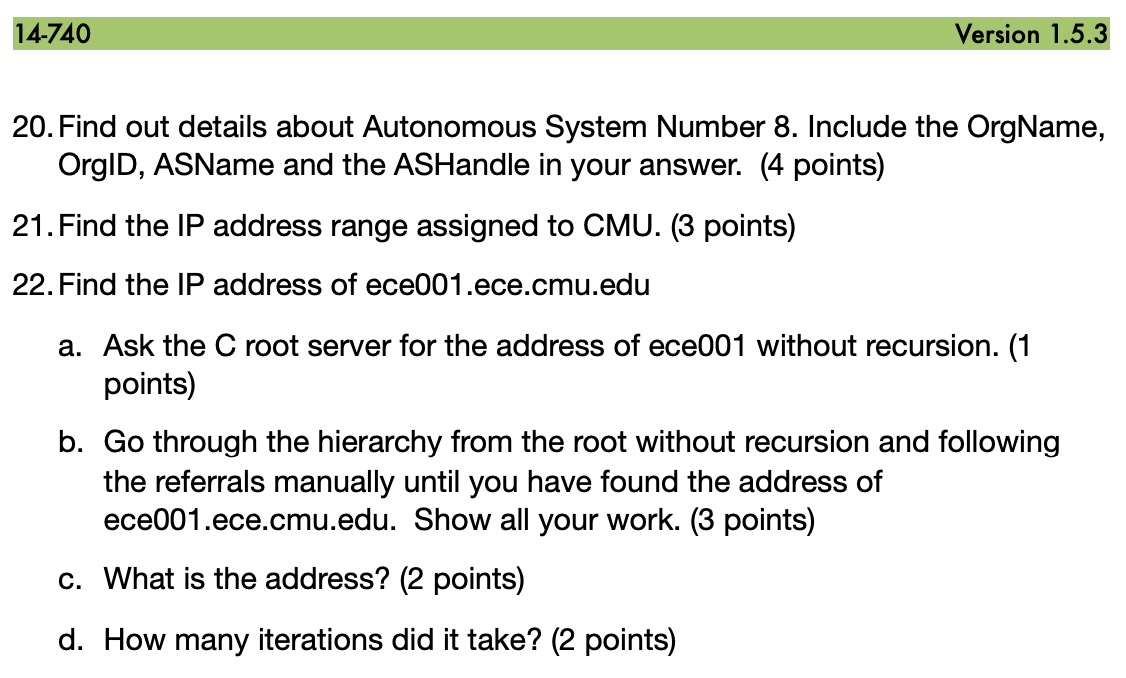
13: check local default DNS:
https://www.cyberciti.biz/faq/how-to-find-out-what-my-dns-servers-address-is/
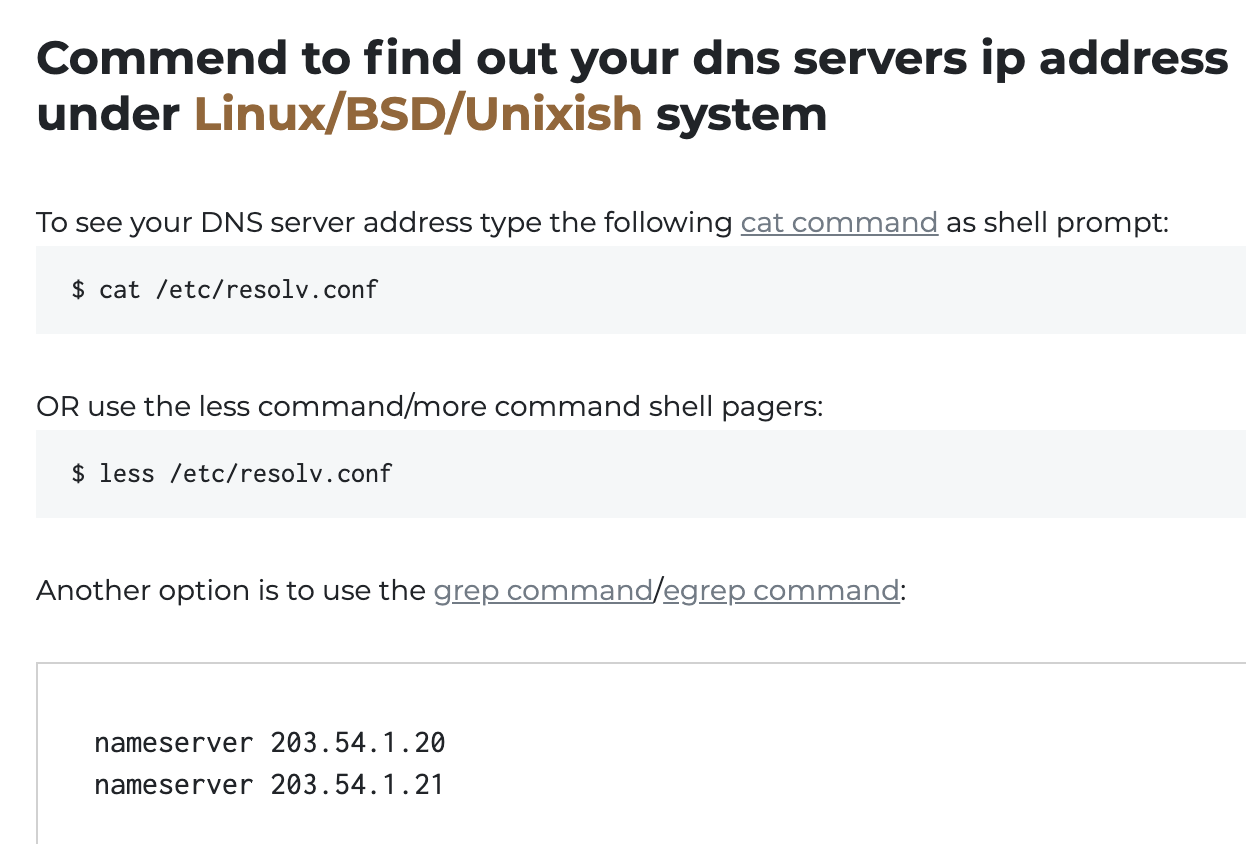
14: root servers
https://www.iana.org/domains/root/servers
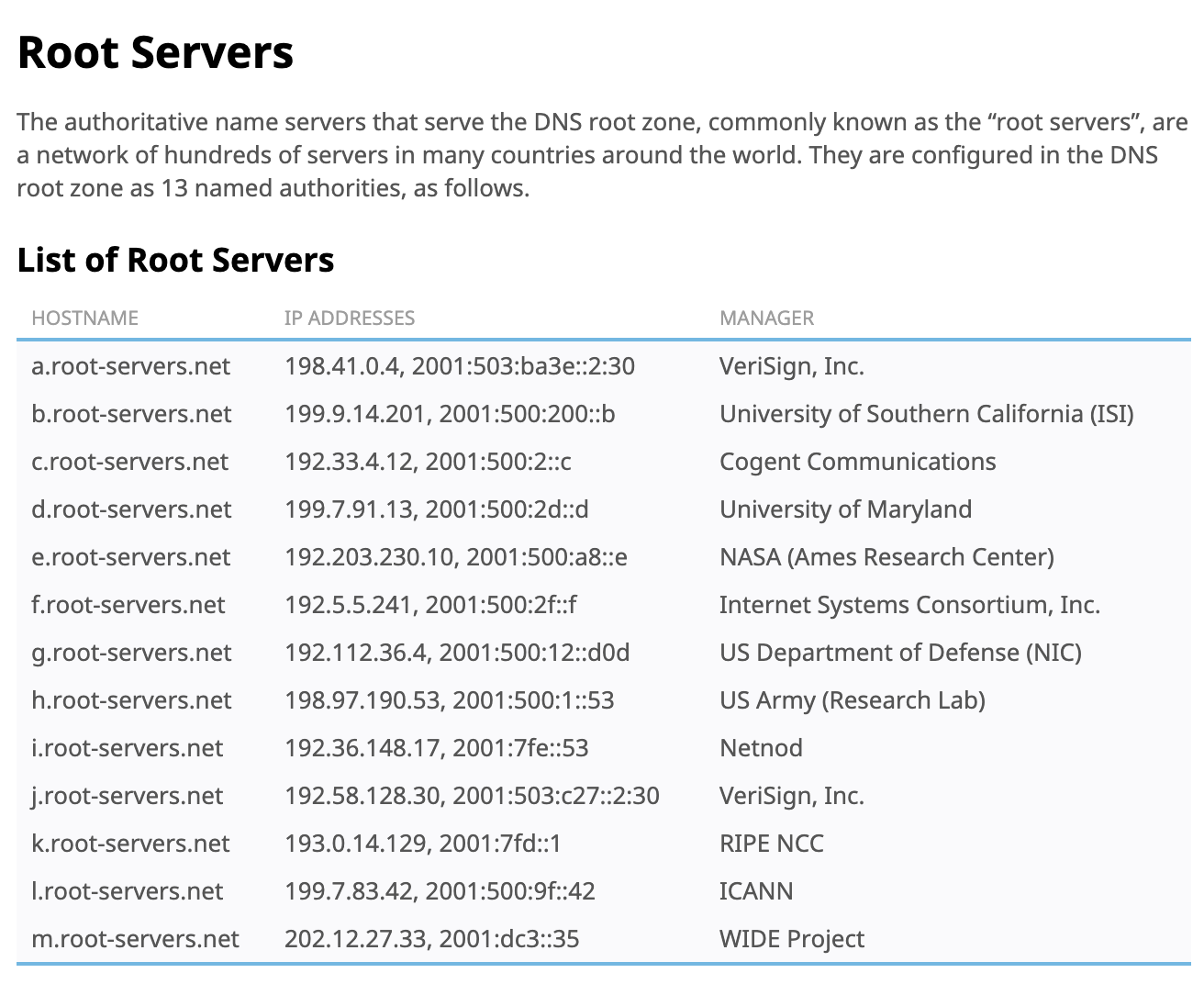
15: dig google @8.8.4.4

probably 8.8.4.4 is google's public DNS server
16: What is the hostname of the default (local) nameserver?

100.65.48.1 from Q13
17: I mentioned in class that the root name servers do not support recursive requests. Prove it. Explain why or why not.
http://www-inst.eecs.berkeley.edu/~ee122/fa13/homework/hw3/HW3-solutions.pdf

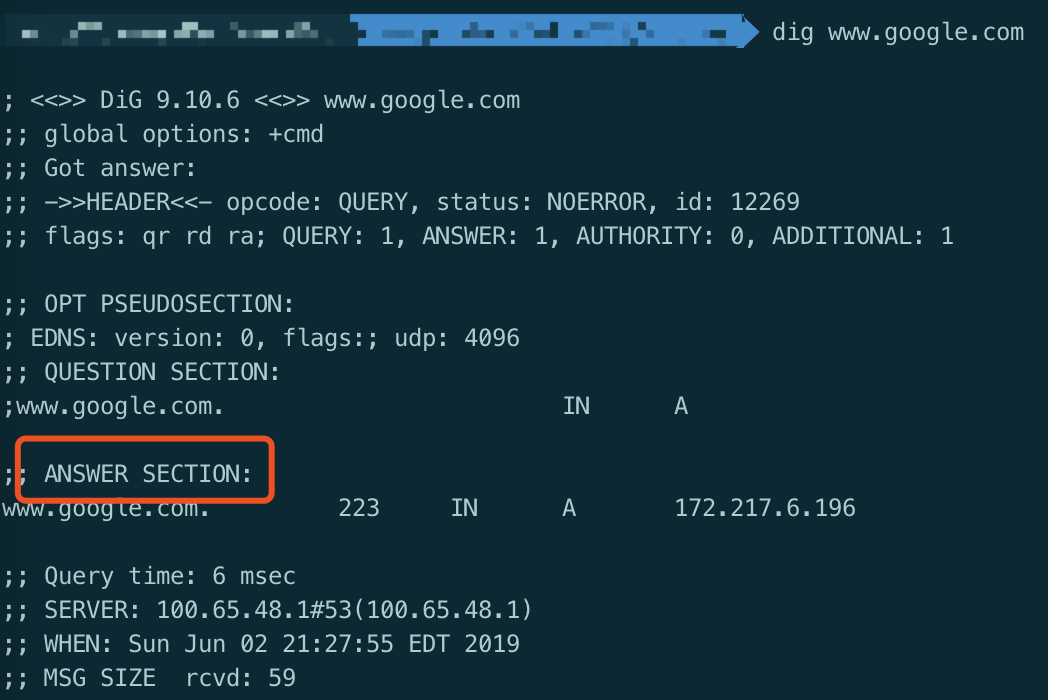
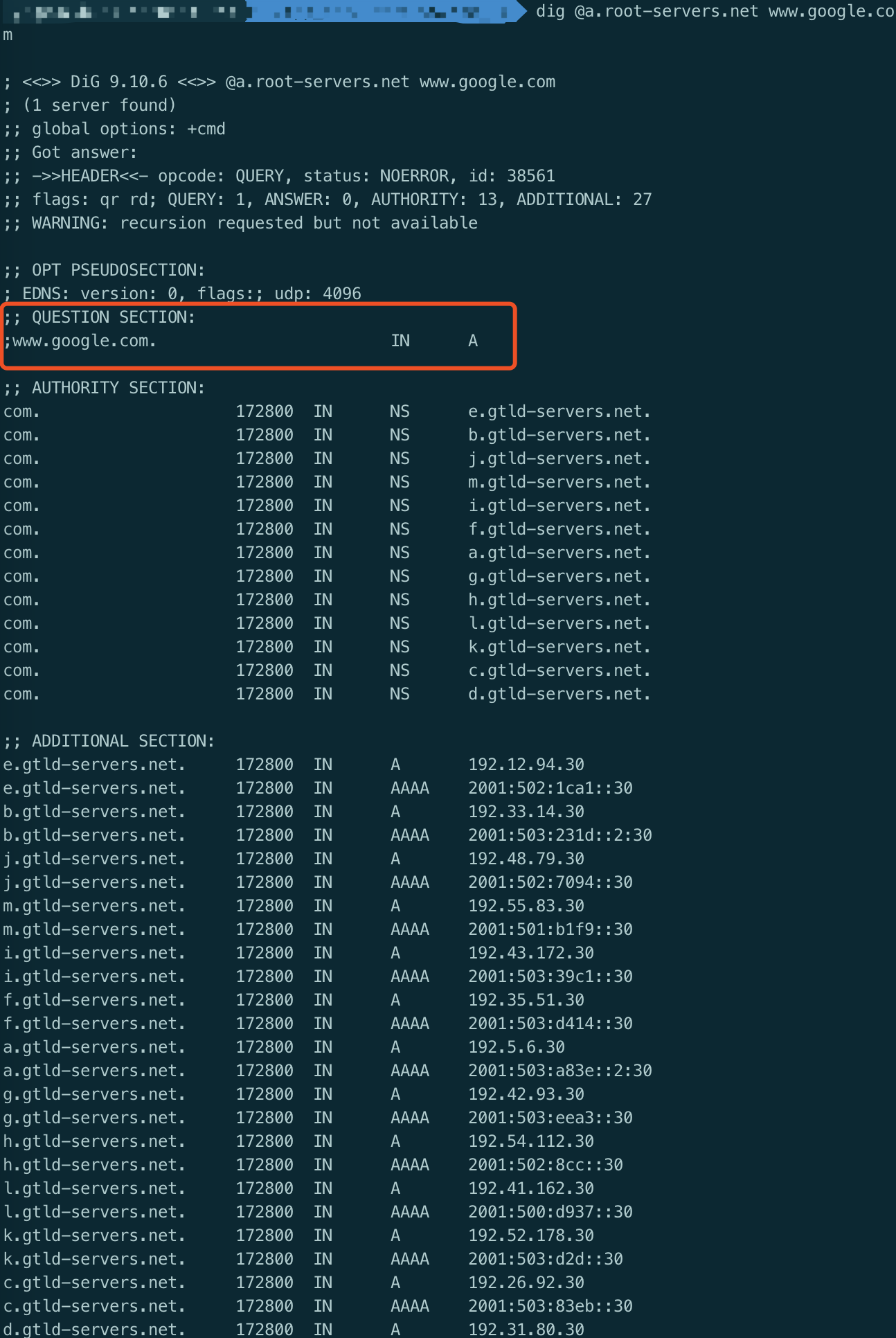
18: Find the top-level name servers for the .beer domain. Which organization owns these name servers? What is the technical point-of-contact? (If you use multiple steps to find the answers, show each step in your report). (5 points)

19: List the IP addresses and names of all name servers and mail servers for the ECE department at CMU. (ECE’s domain name is ece.cmu.edu).
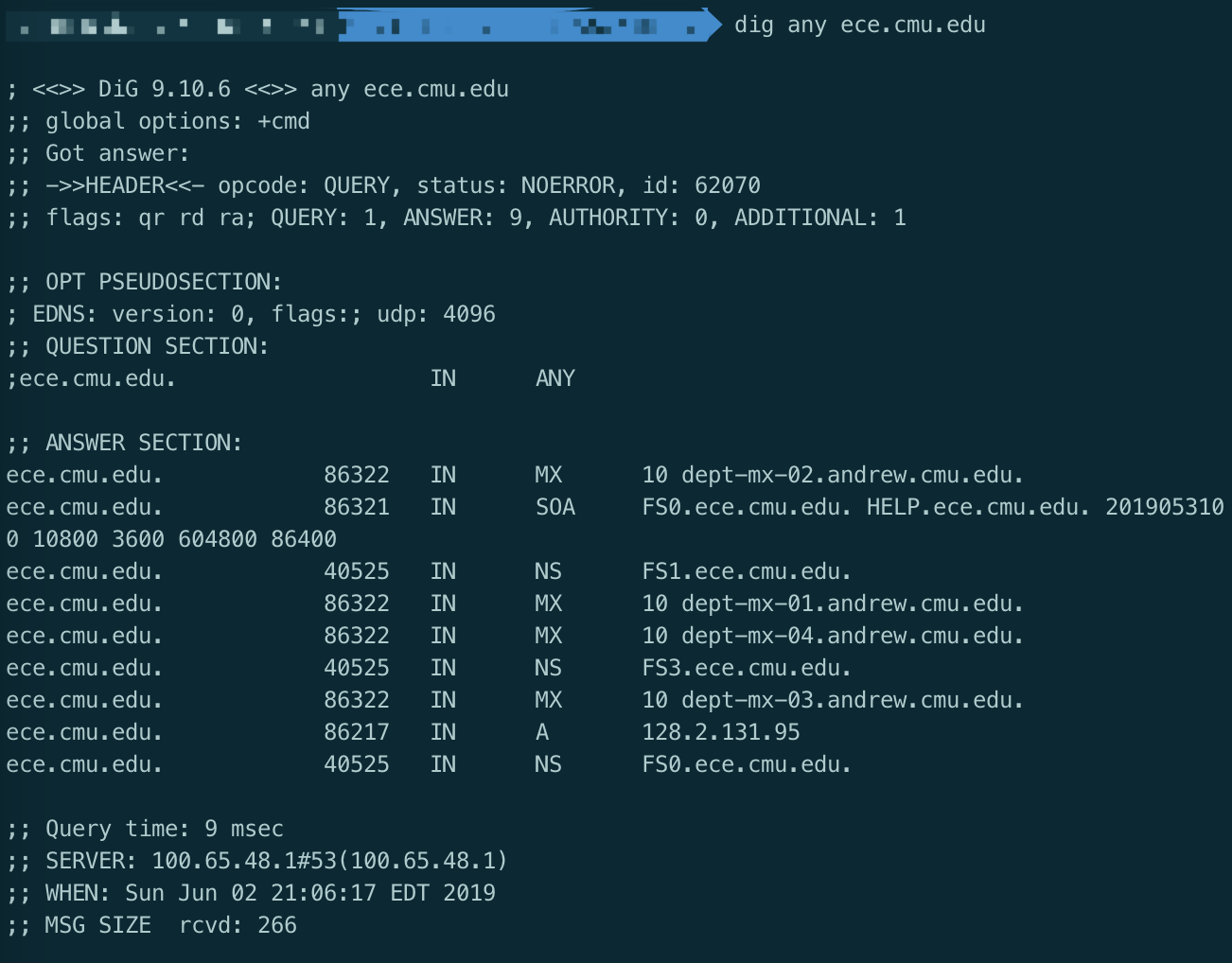
21: Find the IP address range assigned to CMU
